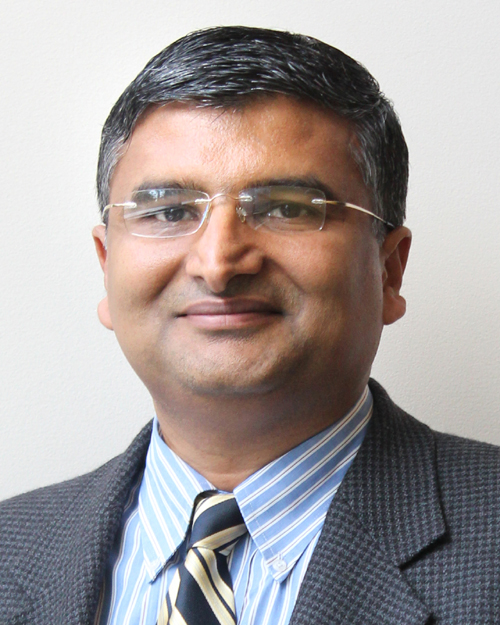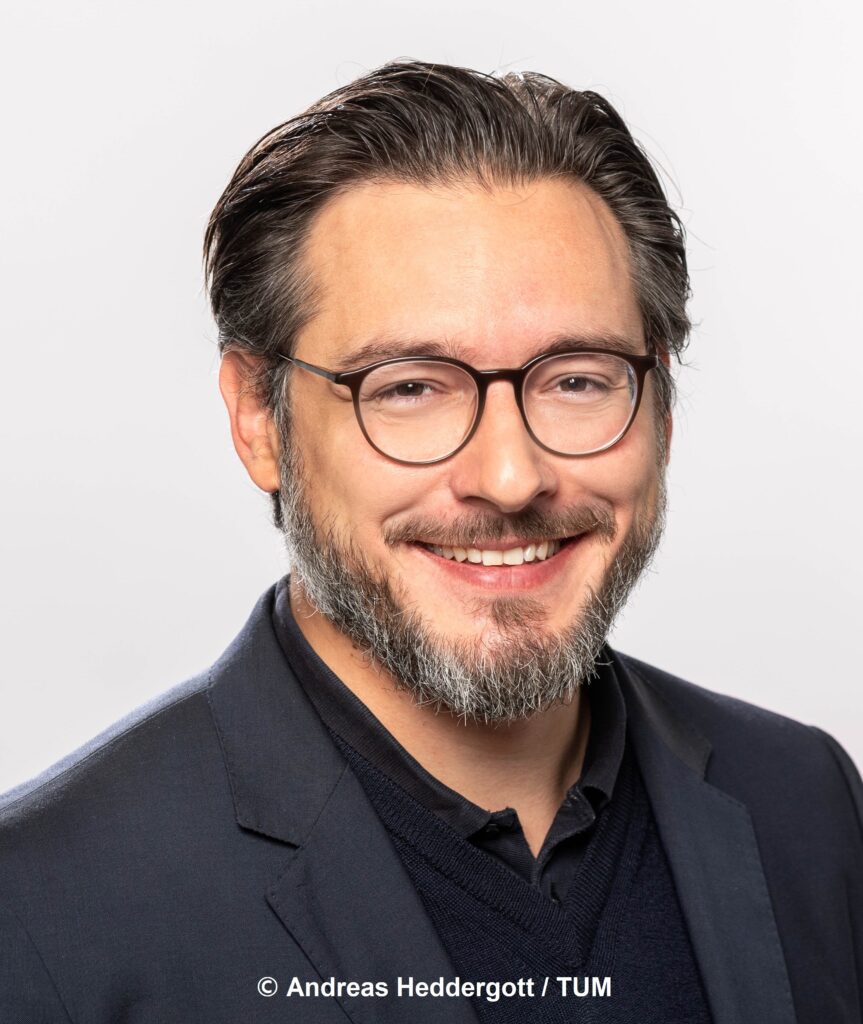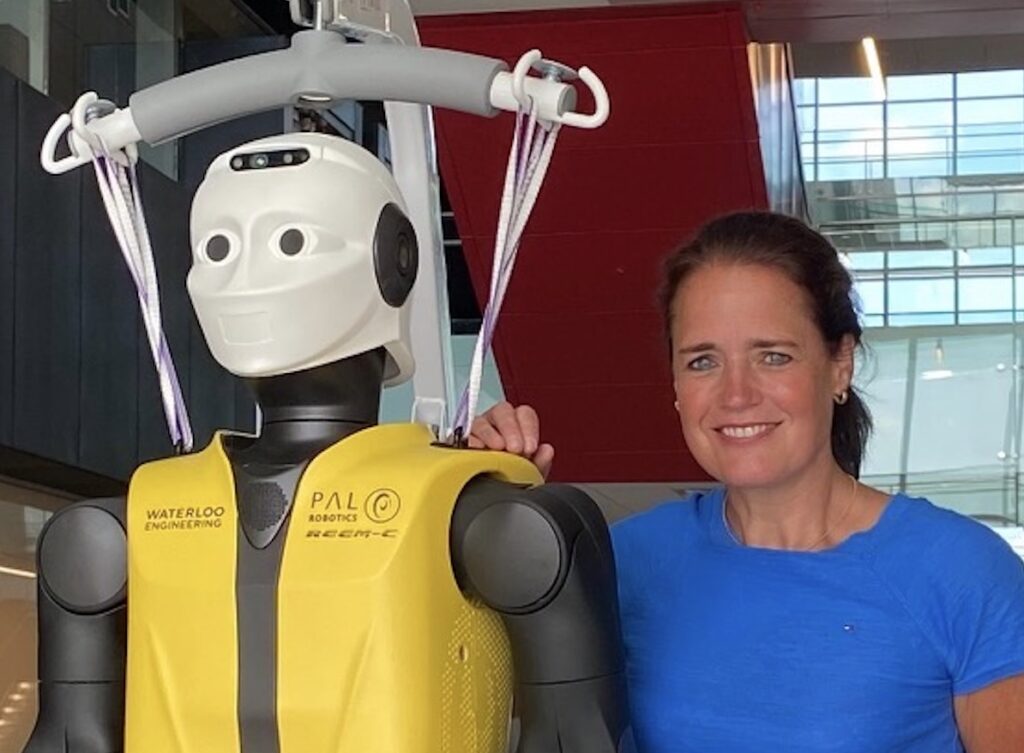Plenary Speakers

Jaydev P. Desai, Georgia Institute of Technology, USA
Tuesday, June 25, 09:10-10:00 @ Rosenthal Pavilion (10F)
Challenges and Opportunities in Robotics for Transcatheter and Endovascular Interventions
Abstract: Transcatheter and endovascular interventions are clinically challenging from several viewpoints. These interventions require navigation through tortuous anatomy irrespective of whether the procedure needs to be performed in the organ or in the vasculature. Furthermore, the need to visualize the device in real-time through the appropriate imaging modality and not perforate the vessel during the intervention, further complicates the robotic solution. This talk will focus on two clinically challenging problems, with very different solution approaches.
The first part of the talk will focus on developing a robotic solution for the delivery of the mitral valve implant to address mitral regurgitation, which is a common heart valve disease. Current approaches for mitral valve repair include open heart surgery (which carries the risk of post-operative complications) and transcatheter mitral valve repair (TMVr). TMVr is a relatively new approach that is performed on a beating heart using a catheter that is guided to the target location to implant the device to reduce or eliminate mitral regurgitation. Given the tortuosity of the path that needs to be taken to reach the mitral valve, TMVr is a clinically challenging procedure. We will present our work in developing a highly articulated, intravascular robot that can be guided to deploy the mitral valve implant under image guidance.
The second part of the talk will focus on robotically steerable guidewires. Guidewires are routinely used in several endovascular interventions and one of the primary challenges in using a guidewire is the lack of steerability of the distal tip to navigate vessel tortuosity. Furthermore, it is equally important to steer without harming the vessel. As an example, chronic total occlusions (CTOs) remain the riskiest, most challenging, and least successful vascular lesions to treat with traditional endovascular devices. Peripheral artery disease (PAD) in particular, is one of the most common causes of cardiovascular deaths worldwide. Procedural complexity in treating CTOs are attributed to multiple causes. We will present our work on the development of 350 microns (~0.014”) and 270 microns (~0.0106”) robotically steerable guidewires as a potential solution to this challenging clinical problem.
Biography: Dr. Jaydev P. Desai is currently a Professor at Georgia Tech in the Wallace H. Coulter Department of Biomedical Engineering and holds the G.P. “Bud” Peterson and Valerie H. Peterson Faculty Professorship in Pediatric Research. He is the Associate Chair for Undergraduate studies in BME at GT, founding Director of the Georgia Center for Medical Robotics (GCMR), and an Associate Director of the Institute for Robotics and Intelligent Machines (IRIM). He completed his undergraduate studies from the Indian Institute of Technology, Bombay, India, in 1993. He received his MA in Mathematics in 1997 and MSE and Ph.D. in Mechanical Engineering and Applied Mechanics in 1995 and 1998 respectively, all from the University of Pennsylvania. He was also a Post-Doctoral Fellow in the Division of Engineering and Applied Sciences at Harvard University.
He is a recipient of several NIH R01 grants, NSF CAREER award, and was the lead inventor on the “Outstanding Invention in the Physical Science Category” at the University of Maryland, College Park, where he was formerly employed. He is also the recipient of the Ralph R. Teetor Educational Award and the 2021 IEEE Robotics and Automation Society (RAS) Distinguished Service Award. He has been an invited speaker at the National Academy of Sciences “Distinctive Voices” seminar series and also invited to attend the National Academy of Engineering’s U.S. Frontiers of Engineering Symposium. He has over 200 publications, is the founding Editor-in-Chief of the Journal of Medical Robotics Research, and Editor-in-Chief of the four-volume Encyclopedia of Medical Robotics. At 2018 ICRA, his prior work was the finalist for “IEEE RAS Award for the Most Influential Paper from ICRA 1998” (20-years impact). Most recently, he was selected as the recipient of the 2024 IEEE RAS George Saridis Leadership Award in Robotics and Automation from the IEEE RAS. His research group has received several accolades including the best student paper award, best symposium paper award, cover image of IEEE Transactions on Biomedical Engineering, and featured article in the IEEE Transactions on Biomedical Engineering. His current research interests are primarily in the areas of image-guided surgical robotics, pediatric robotics, endovascular robotics, and rehabilitation and assistive robotics. He is a Fellow of IEEE, ASME, and AIMBE.

Sami Haddadin, Technische Universität München, Germany
Tuesday, June 25, 13:00-13:50 @ Rosenthal Pavilion (10F)
Tactile robots: building the machine and learning the self
Abstract: The development of robots that can learn to interact with the world and manipulate the objects in it has emerged as one of the greatest and so far largely unsolved challenges in robotics research. In this talk, I will argue that the development of such advanced machines requires a transition from classical manual design with purely model-based control to a novel paradigm. We need to allow the machine to autonomously develop its own blueprint and generate its topological, kinematic, and dynamic self. Building on this, it shall develop controls for its own body as it moves, learns to manipulate objects in a controlled way, and sensitively interacts with the world.
Drawing from our work in torque-controlled lightweight robots towards human-safe tactile robots that can manipulate, fly, or drive, I explain the technological quantum leaps that recently have taken place. In particular, this progress was made possible by human-centered design, soft and force-sensitive control, contact reflexes, and model-based machine learning. In the real world, by enabling human-robot coexistence, collaboration, and interaction for the first time, this robotic technology has proven transformative to traditional manufacturing already around the globe. Increasingly, it is now impacting professional services, domestic applications, medicine and healthcare.
Then, I will use our current work to chart the path toward the next generation of tactile machines. We have taken first steps towards increasingly autonomous designing and building machines that have the ability to learn their self and thus adapt to changes in body topology and ultimately their entire dynamics. Finally, I will present recent results on designing modular control and learning architectures that achieve complex behaviors for challenging manipulation problems while being provably stable.
Biography: Sami Haddadin is founder and Executive Director of the Munich Institute of Robotics and Machine Intelligence (MIRMI) at TUM and an IEEE Fellow. His research deals with the fundamentals of robotics and AI for creating intelligent machines. He received degrees in EE, CS and Technology Management from TUM and LMU and a doctorate from RWTH Aachen. He was a research scientist at the DLR and Professor at Leibniz University Hannover. He is chairman of the Bavarian AICouncil and recipient of the German President’s Award for Innovation and Leibniz Prize.

Katja Mombaur
Karlsruhe Institute of Technology, Germany and University of Waterloo, Canada
Wednesday, Jun 26, 09:10-10:00 @ Rosenthal Pavilion (10F)
Motion intelligence for humanoid robots in the real world: the roles of bio-inspiration and computational methods
Abstract: In the past years, the field of humanoid robots has seen an amazing progress with many new prototypes being developed in industry as well as in academic labs worldwide. The vision of humanoids truly being able to provide support to humans in a wide range of dirty, dull and dangerous jobs and to becoming a companion or carer of humans gets closer to being fulfilled. However, generating and controlling motions for whole-body – i.e. bipedal – humanoid robots with their nonlinear dynamics with many degrees of freedom, underactuation and inherent instability is still very challenging, and in general humanoids do not yet achieve human motor skill levels. In this talk, I will give an overview of our research on endowing humanoid robots with motion intelligence or embodied artificial intelligence that makes the robot aware of how it moves in and interacts with its dynamic environment and with humans. As they need to either physically interact with humans or replace human actions, they must be able to predict human behavior, recognize human intent, know how to safely interact with them and how to best support them. In addition, they should convey their motion intent to humans by moving in a human-like way and thus making it easier for humans to interact with the robots. Our research aims to discover and describe general principles of human movement such as stability and efficiency or optimization principles underlying certain behaviors. We aim not only for qualitative understanding but also for quantitative knowledge about human movement that can be formulated in terms of mathematical models. These can serve as bioinspiration for humanoid motions, but also support understanding of human intent. Building on top of this understanding, we develop efficient computational methods combining model-based methods such as optimization with model-free approaches, that allow to control and improve motions for humanoids adapted to the specific situation. In this talk, I will present different examples for humanoid motions that we have investigated for our Reem-C robot, which all require an effective coordination of the whole body and control of stability, such as
• Walking on different terrains, and maintaining balance while being perturbed;
• Versatility in manipulation: Interacting with complex objects, tools, in particular bimanual manipulation of objects and the resulting constraints on the robot;
• Versatility in locomotion: Using personal transporters (e.g. Segway) to travel larger distances;
• Close-proximity physical-social human-robot interactions including touch (such as dancing or care actions);
• Multimodal communication including body language.
Biography: Katja Mombaur joined the Karlsruhe Institute of Technology in Germany in 2023 as Full Professor, Chair for Optimization & Biomechanics for Human-Centred Robotics and Director of the BioRobotics Lab. In addition, she holds an affiliation with the University Waterloo in Canada where she has been Full Professor and Canada Excellence Research Chair (CERC) for Human-Centred Robotics & Machine Intelligence since 2020. Prior to moving to Canada, she has been a Full Professor at Heidelberg University where she directed the Optimization, Robotics & Biomechanics Chair, as well as the Heidelberg Center for Motion Research. Her international experience includes research activities at LAAS-CNRS in Toulouse and Seoul National University, as well as in the USA. She studied Aerospace Engineering at the University of Stuttgart and SupAéro and holds a PhD in Mathematics from Heidelberg University. Katja Mombaur currently serves as the Vice President for Member Activities of the IEEE Robotics & Automation Society and co-chair of the TC on Humanoid Robots. She is a Senior Editor of the IEEE Transactions on Robotics and has actively contributed to the organization of many conferences and workshops, in various roles e.g. as Program Chair of the recent IEEE RAS Humanoids 2023 conference. Katja’s research focuses on understanding human movement by a combined approach of model-based optimization and experiments and using this knowledge to improve motions of humanoid robots and the interactions of humans with exoskeletons, prostheses and external physical devices. Her goal is to endow humanoid and wearable robots with motion intelligence that allow them to operate safely in a complex human world. The development of efficient algorithms for motion generation, control and learning is a core component of her research.

Soon-Jo Chung, California Institute of Technology, USA
Wednesday, Jun 26, 13:00-13:50 @ Rosenthal Pavilion (10F)
Contraction is All You Need in Robot Learning
Abstract: Deep learning offers necessary representation power for complex dynamical systems, yet it lacks robustness, scalability, and interpretability that are crucial for safety-critical robotic systems. Conventional ML methods require huge amounts of data to train, making real-time re-training of an entire deep neural network infeasible for small robots. Our Neural-Fly (Sci. Robotics, 2022) and subsequent work for fault tolerance overcame those limitations by identifying and rapidly adapting the low-dimensional parameters that must be updated in real time. Its particular adaptive control architecture can also be interpreted from the policy-gradient RL perspective. The key innovation is to systematically guarantee stability and safety in a hierarchically separated architecture using contraction theory. It is no surprise that many well-known convergence results for supervised learning and RL (e.g. policy iteration) rely on exponential stability. I argue that exponential convergence to controllable bounds by contraction, used in conjunction with the comparison lemma, provides superior robustness and stability guarantees for robot learning and control compared to popular methods of asymptotic input-to-state stability. I will present some recent results in the systematic construction of a contraction metric via convex optimization, new safety filtering improving upon control barrier functions, and various real-robot control demonstrations, including LEONARDO, the first bipedal robot capable of walking, flying, slacklining, and skateboarding, and fault tolerant control of urban air mobility vehicles and distributed space robots.
Biography: Soon-Jo Chung is the Bren Professor of Control and Dynamical Systems and Senior Research Scientist of the Jet Propulsion Laboratory in the California Institute of Technology. More detailed bio here.
